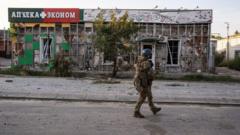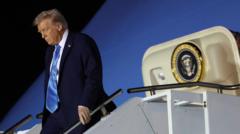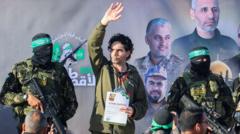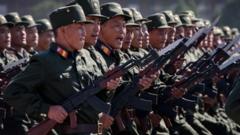Despite a new cease-fire agreement taking effect after a prolonged conflict, analysts warn that the situation remains unstable. The re-emergence of Hamas fighters indicates ongoing tensions and challenges for Israeli leadership.
Gaza Cease-Fire Marks a Fragile Moment in Ongoing Conflict

Gaza Cease-Fire Marks a Fragile Moment in Ongoing Conflict
A look into the recent cease-fire in Gaza and its implications for Hamas and Israeli leadership.
The long-awaited cease-fire in Gaza was activated after 15 months of extreme violence and devastation, allowing for a moment of relief in the region. However, analysts stress that the conflict is far from over. Key players like Hamas’s leadership and Israeli Prime Minister Benjamin Netanyahu are navigating a complex landscape, with both side's motives illustrating the fragile nature of the agreement.
Hamas, despite suffering significant losses—including the death of its leader Yahya Sinwar—has managed to stabilize its hold on the territory. As remnants of its fighting force regroup and assert control, experts point out that Hamas remains a formidable actor in Gaza. Daniel Levy, a former negotiator for Israel, emphasized that the group is still a significant presence despite the heavy toll inflicted on it over the past months.
The delay in the cease-fire's implementation showcased the ongoing challenges in the negotiations, with American influence and bipartisan support being critical in realizing the current agreement. The situation remains precarious, with the three-phase cease-fire plan being marked by unresolved tensions, and the next round of talks expected in 16 days.
With pressing political dynamics at play—including Donald Trump's potential return to office—observers are closely monitoring how these developments will shape future negotiations and the broader implications for peace in the region. As both parties tread carefully, it becomes clear that the cease-fire represents merely a temporary respite amidst a long-standing and deeply rooted conflict.
Hamas, despite suffering significant losses—including the death of its leader Yahya Sinwar—has managed to stabilize its hold on the territory. As remnants of its fighting force regroup and assert control, experts point out that Hamas remains a formidable actor in Gaza. Daniel Levy, a former negotiator for Israel, emphasized that the group is still a significant presence despite the heavy toll inflicted on it over the past months.
The delay in the cease-fire's implementation showcased the ongoing challenges in the negotiations, with American influence and bipartisan support being critical in realizing the current agreement. The situation remains precarious, with the three-phase cease-fire plan being marked by unresolved tensions, and the next round of talks expected in 16 days.
With pressing political dynamics at play—including Donald Trump's potential return to office—observers are closely monitoring how these developments will shape future negotiations and the broader implications for peace in the region. As both parties tread carefully, it becomes clear that the cease-fire represents merely a temporary respite amidst a long-standing and deeply rooted conflict.























